|
Below, you'll find a number of publications about Lake Clark's history and people. Several of these are free and you can be download particular sections, whole books, or request a free hard copy be sent to you. |
|
"Where We Found A Whale" A History of Lake Clark National Park & Preserve Archeologist Brian Fagan tells the prehistory of the Lake Clark National Park & Preserve area through the lens of two rock painting sites in the Park. He writes that Lake Clark, "is a spectacular, yet little known, jewel of the National Park System. Relatively few people visit the park, which is only a short distance from Anchorage by Alaskan standards, yet people have hunted, fished, and foraged here for at least 10,000 years. 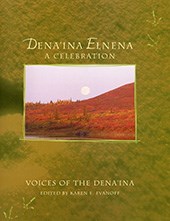
NPS Photo Karen E. Evanoff (editor) 2010, National Park Service This is a story of the Dena'ina people. It presents Dena'ina names that their ancestors placed across miles of the surrounding environment. This cultural atlas features stories, essays, maps, photographs and other illustrations that demonstrate cultural ties to the land. 
James Kari, 2007, Alaska Native Language Center Vocabulary lists arranged by topic provide a panoramic view of the central cultural and ecological concepts of the Dena'ina. In terms of breadth of subjects, technical specificity, dialect coverage, and illustrations, this is the most refined topical lexicon in existence for an Alaska Native language and for any language in the Athabascan family. 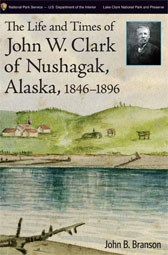
NPS Photo John B. Branson, 2012, National Park Service Little was known about Lake Clark National Park and Preserve's namesake until park historian Branson set out to find out about John W. Clark. Clark was one of the first Euroamerican residents of Alaska, arriving at St. Michael with the Western Union Telegraph Company Russo-American Expedition to build a worldwide telegraph line in 1866. He was a distinguished trader on the Yukon, Kuskokwim and Nushagak Rivers between 1868 and 1896. Clark lived at Nushagak nearly twenty years and was a founder of the world-renowned Bristol Bay commercial salmon fishing industry. He was an entrepreneurial fur trader and merchant and likely the first English speaking resident of the Bristol Bay region. Clark was a close friend of the Native people of western Alaska and traveled widely about the region by dog sled and baidardka. He married and established a large extended family in western Alaska. 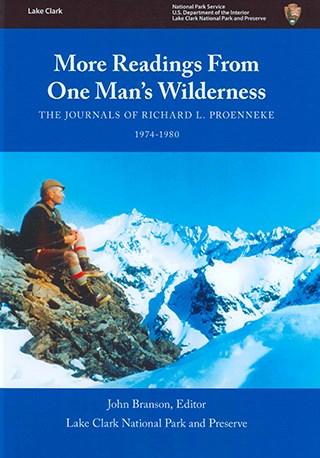
NPS Photo John B. Branson (editor) 2005, Alaska Geographic Association and Lake Clark National Park and Preserve An icon of wilderness, Dick Proenneke built his own cabin on Twin Lakes in Lake Clark National Park. His cabin stands out for its remarkable craftsmanship, which reflects his unshakeable wilderness ethic. Using his own labor and only hand tools, he began work on the cabin in 1967 at the age of 51 and lived there for more than 30 years. The publication of his 1968-1969 journals in 1973, "One Man's Wilderness," was largely responsible for making Proenneke a public figure. Proenneke wrote in his journals daily and eventually donated all of them to the NPS. Branson's light edit does not change Proenneke's writing. Explanatory notes and maps are provided to inform readers unfamiliar with the territory. 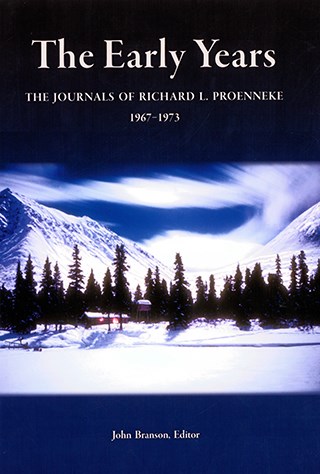
John B. Branson (editor), 2010, Alaska Geographic Association This third volume of the journals of Richard L. Proenneke covers the early years in which he moves to Twin Lakes, builds his cabin, and has his journals edited and published in One Man's Wilderness by his friend Sam Keith. Here you read Proenneke's own diary entries during the same period, and gain greater insight into his character. Visited by neighbors, both four-legged and two-legged, Dick Proenneke's life at Twin Lakes was a rich existence. 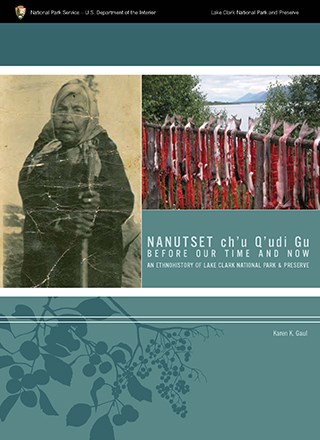
Karen K. Gaul (editor) 2007, National Park Service This ethnohistory focuses on the Dena'ina who reside in the general region of Lake Clark National Park & Preserve and who have occupied countless settlement sites, journeyed along rivers and through high passes, hunted across vast territories, fished from rivers and lakes, and gathered subsistence materials in the region for hundreds of years. This book identifies resources and places in Lake Clark National Park & Preserve that are important to traditionally associated people. This knowledge allows for respectful treatment of ethnographic resources through careful consideration of the effects that our management actions may have on them. This history of occupation and use includes descriptions of contemporary settlements around the park edges and of continued subsistence use of these lands. 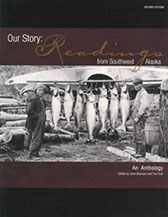
John Branson & Tim Troll (editors), 2006, Alaska Geographic Readers are introduced to the diverse history of the Southwest Alaska Native cultures and the transformative Russian and American periods of exploration and colonization of Bristol Bay in this collection of articles. From first hand stories to scholarly works, Our Story includes writings on the history of the salmon fishery, descriptions of Russian sea otter hunting and beaver trapping practices, and health and living conditions of the 19th and early 20th centuries. 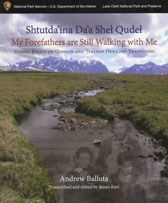
Andrew Balluta (author) & James Kari (editor), 2008, National Park Service Andrew Balluta was a precise and observant speaker of Dena'ina from Kijik and Nondalton. Balluta has made tremendous contributions to knowledge as a scholar and mentor, as a ranger for Lake Clark NP&P, and as consultant for many researchers. These essays include thoughtful discussions of Dena'ina values, of geography and travel, of animal and fish behavior, of technical skills, and some prehistoric events and legends. ANILCA outlined many purposes for creating Lake Clark National Park & Preserve including protecting cultural resources. This book directly supports that mission in a way that fosters improved understanding, shared involvement and meaningful cooperation. This book contains a CD with the voice recordings of the essays. 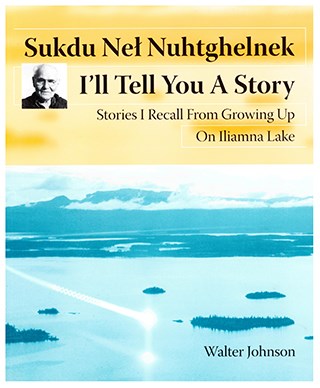
Walter Johnson, 2004, Alaska Native Language Center Walter Johnson of Old Iliamna Village and Homer is a multi-talented outdoorsman, musician, and expert in the Iliamna dialect of the Dena'ina language. This is the first Dena'ina book to coordinate written text and sound. The stories presented here give a colorful portrait of early twentieth century Iliamna Dena'ina life skills and lore. The texts offer practical lessons in Dena'ina pronunciation, reading, and grammar. A CD accompanies this book, prepared by linguist James Kari with support from the NPS. 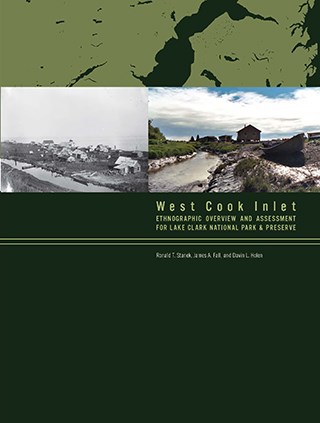
NPS Photo Ronald T. Stanek, James A. Fall, and Davin L. Holen (authors), 2006, National Park Service This report describes the culture history of the people and communities of western Cook Inlet, south central Alaska. It is a companion to Nanutset ch'u Q'udi Gu (Before Our Time and Now): An Ethnohistory of Lake Clark National Park & Preserve. Its goal is to identify the traditional and contemporary association between the people and communities of western Cook Inlet and Lake Clark NP&P. Primary author Ron Stanek has worked with the Tyonek community and has documented subsistence practices in the region for 30 years. This initial comprehensive background study of types, uses, and users of ethnographic resources reviews existing information and identifies new data needs. The overview reviews and summarizes existing ethnographic data for people and resources; the assessment evaluates them and identifies data gaps. Information is derived primarily from existing archival and published materials and is supplemented with ethnographic interviews with knowledgeable community consultants. 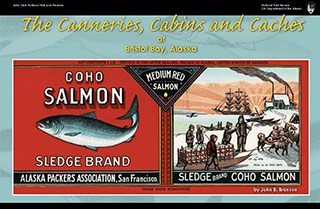
NPS Photo John B. Branson, 2007, National Park Service The Canneries, Cabins, and Caches of Bristol Bay, Alaska chronicles the world's greatest concentration of salmon and canneries and their influence on Native and non-Native people in southwestern Alaska. This book documents long abandoned canneries, and those still in use, during the hey-day in the late nineteenth and early twentieth centuries with maps, historic photographs, and first hand accounts that give the reader an impression of the unique Bristol Bay way of life. |
Last updated: October 23, 2015
